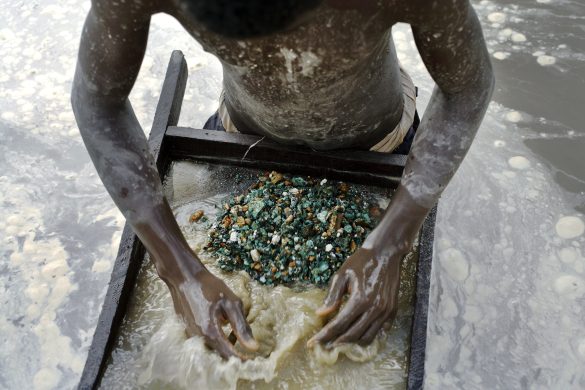Priserne på de fleste af verdens fødevarer har været for nedadgående siden april i fjor og den seneste oversigt for marts i år bekræfter tendensen. Ikke mindst efter et historisk fald i prisen på sukker, der rammer flere fattige lande, som eksporterer “det hvide guld”.
ROME, 2 April 2015 (UN News Service): According to the United Nations Food and Agricultural Organization (FAO), the global food prices continued to decline in March – dropping some 40 points below last year’s level – with sugar prices sliding to their lowest level since February 2009.
Noting a 1.5 per cent drop since February and 18.7 per cent overall descent from a year ago, FAO concluded that the dipping prices for vegetable oils, cereals (kornprodukter) and meat more than offset a rise in dairy (mælke) prices – contributing to the lower index, which in March averaged 173.8 points.
The FAO Food Price Index is a trade-weighted guide that aggregates price sub-indices of cereals, meat, dairy products, vegetable oils and sugar prices on international markets.
On a downward path since April 2014, abundant (rigelige) supplies and the rising US dollar have pushed down international prices of most food commodities.
Mainly due to improved crop prospects, sugar dropped a sharp 9.2 per cent since February to 187.9 points in March. The continued weakening of the Brazilian currency against the US dollar also contributed to the change.
Fyldte kornlagre
A 2015 downward trend in cereal prices, which averaged 169.8 points in March – down 1.1 per cent from February and some 18.7 percent below its level a year earlier – is attributable to large export supplies and mounting inventories (lagre), in particular for wheat and maize.
Witnessing nearly a 3.1 per cent drop since February, the vegetable oil averaged 151.7 points in March – its lowest value since September 2009.
Also, meat averaged 177 points, down 1 per cent from its revised February value, while dairy rose for the second consecutive month to average 184.9 points, a 1.7 per cent increase from February.
Men mere broget billede senere i 2015
Meanwhile, according to FAO’s latest Cereal Supply and Demand Brief, due to a larger than anticipated maize harvest in the European Union (EU), the 2014 cereal output estimate was raised to 2,544 million tons, which, if confirmed, would outstrip the 2013 record by 1 per cent.
Looking ahead to 2015, reduced plantings in the EU global wheat production are expected to lead to a 1 per cent drop in the current 2014 estimate – yielding 722 million tons this year.
While China, India and Pakistan are all expected to harvest close to 2014’s record levels, production is predicted to decline in Russia and Ukraine.
As for coarse grains, preparations are only now under way for plantings in the northern hemisphere.
Sydafrikas majshøst hårdt ramt
However, in the southern hemisphere where crops are more advanced, early indications point to a decline in 2015 production from last year’s high levels.
In particular, following severe precipitation shortfalls (mindre nedbør) earlier this year, South Africa’s maize production is expected to decline by a sharp 33 per cent.
Rice production prospects for 2015 are generally positive in the southern hemisphere, with sizeable increases forecasted in Indonesia, Sri Lanka, Colombia and Paraguay.
By contrast, Australian output is officially anticipated to fall by 18 per cent, reflecting lingering shortages of irrigation water.
At the same time, FAO projected close to a 17 million tons increase in 2014-2015 world cereal utilization (forbrug) – to 2,493 million tons – largely mirroring historical revisions in China and India.
Læs videre på
http://www.un.org/apps/news/story.asp?NewsID=50488#.VR8eQmVqr4s
Begynd fra: “By the end of the 2015 crop season, the…”














